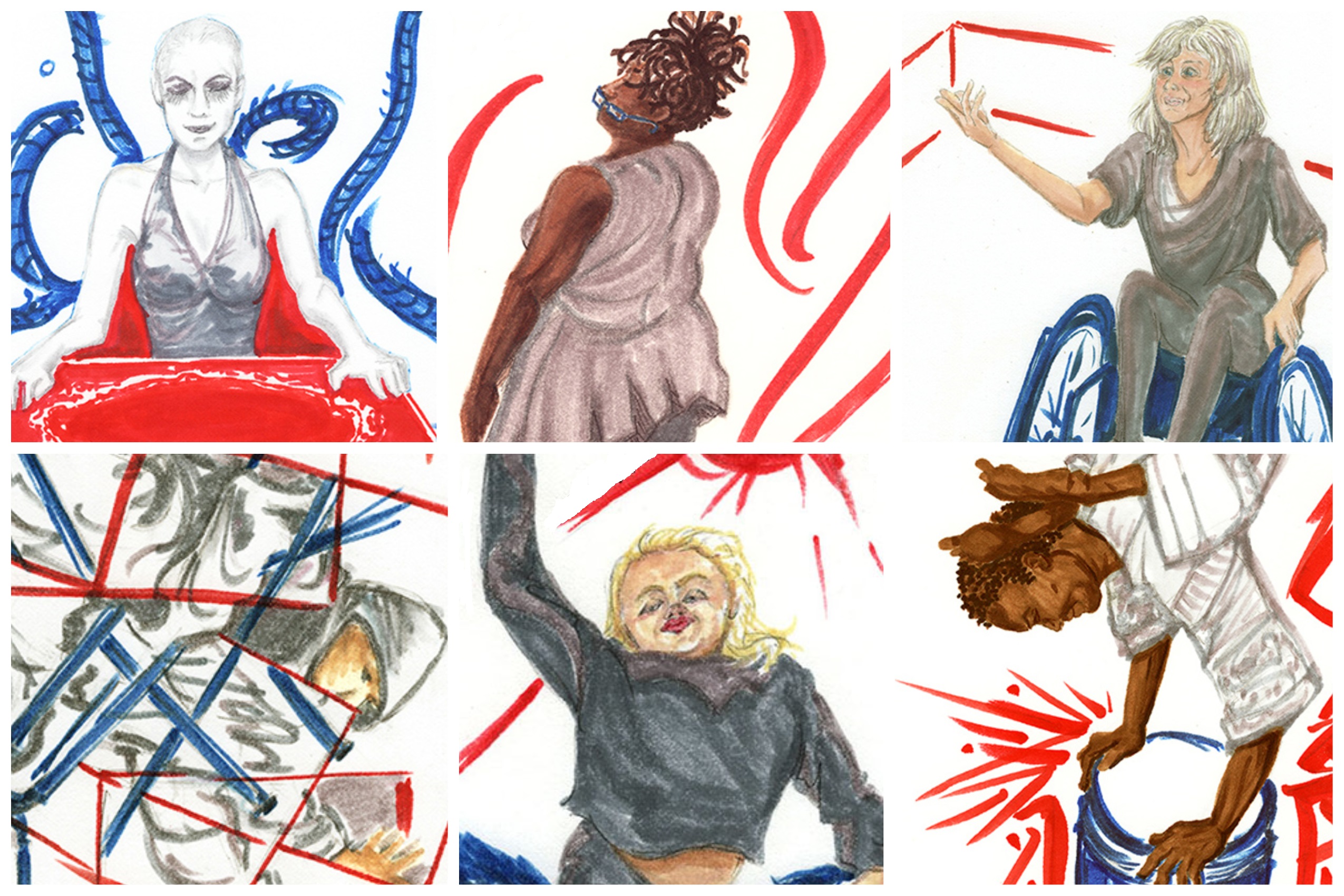Shaking Our Ground
BY SILVA LAUKKANEN; ILLUSTRATIONS BY LIZ BRENT-MALDONADO
After a couple years of research, planning, and a whole lot of educational and touching discussions, Emmaly Wiederholt and I have just published our second round of interviews from the Discussing Disabilities in Dance book project. Instead of feeling that we are near the end, I feel like we have only just begun to understand the breadth of the field of disability in dance. In every interview, I learn about at least one more artist whose story needs to be recorded, which makes it hard to imagine the end of a project like this. It has been amazing to realize the size of this network and how closely knit it is. Its size and diversity have allowed me and Emmaly to cover many different genres as well as include different disabilities.
One of the questions that has resonated with me most because of my own tumultuous relationship with the traditional dance field and the hierarchy in it, is the question: Would you like to see disability in dance assimilated into the mainstream? There is huge variation in how people feel about this; the answers to this question can vary from a long discussion of subtleties to a simple yes or no. I love the visions that people have shared with us for the future. Clearly what mainstream means and represents is different from person to person, country to country, and culture to culture.
During these times when a sense of happiness or even motivation is quite the challenge to achieve, this book project keeps me excited and moving. To learn about yet another dancer with a disability working on the other side of the world or even in the city I live in is rewarding. What drives me is the constant learning that happens when I listen and work creatively with people whose lives have taken different paths than mine, and whose bodies and minds live their everyday lives differently than I do. It stretches my idea of who can dance and what dance is as an art form. It makes me aware of my preconceived notions of abilities or the way we distribute the positions of authority in the dance field. Contemplating all this makes me want to shake the ground I’m on to rearrange the board.
It fills me with joy to share these important stories that prompt us to contemplate who can dance. It also asks how those of us who are temporarily abled bodied can ensure that our work and spaces are accessible and welcoming to all. I hope these interviews make you look around your dance spaces and see who is not there, and then ask: Why are they not there and what can you do to make the change?
~~

The Discussing Disability in Dance Project is a multi-year volunteer effort. We would appreciate any and all support as we move toward making this book project a reality. To learn more, visit here or make a donation below.
